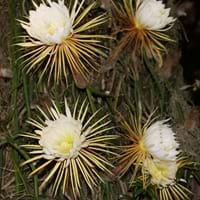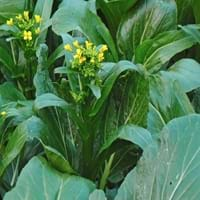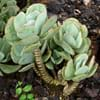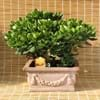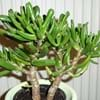Life Span
Perennial
Annual
Type
Cactus, Flowering Plants
Vegetable
Origin
South America, Argentina, Brazil
Europe
Types
Not available
Not Available
Habitat
Dry Forest, limestone outcrops, Subtropical climates
agricultural areas, Moist Soils
USDA Hardiness Zone
10-14
4-10
Sunset Zone
H2, 13, 16, 17, 21, 22, 23, 24
A1, A2, A3, H1, H2, 1a, 1b, 2a, 2b, 3a, 3b, 4, 5, 6, 7, 8, 9, 10, 11, 12, 13, 14, 15, 16, 17, 18, 19, 20, 21, 22, 23, 24
Habit
Upright/Erect
Upright/Erect
Flower Color
White, Light Green
Yellow
Flower Color Modifier
Bicolor
Bicolor
Fruit Color
Orange, Pink, White, Yellow
Sienna, Black
Leaf Color in Spring
Not Available
Green, Light Green
Leaf Color in Summer
Not Available
White, Green, Dark Green
Leaf Color in Fall
Not Available
White, Green, Dark Green
Leaf Color in Winter
Not Available
White, Green, Dark Green
Leaf Shape
Not Available
Oval
Plant Season
Spring, Summer, Fall, Winter
Spring, Fall, Winter
Sunlight
Full Sun
Full Sun, Partial Sun
Type of Soil
Loam, Sand
Clay, Loam, Sand
The pH of Soil
Acidic, Neutral, Alkaline
Acidic, Neutral
Soil Drainage
Well drained
Well drained
Bloom Time
Late Spring, Early Summer
Spring, Summer
Tolerances
Drought, Salt
Drought
Where to Plant?
Container, Ground
Container, Ground
How to Plant?
Cuttings
Seedlings
Plant Maintenance
Medium
Medium
Watering Requirements
Average Water Needs, Distilled Water, Needs good drainage
Allow to dry out slightly between watering, Do not water the foliage, Keep the Soil well drained
In Summer
Lots of watering
Lots of watering
In Spring
Moderate
Moderate
In Winter
Average Water
Average Water
Soil pH
Acidic, Neutral, Alkaline
Acidic, Neutral
Soil Type
Loam, Sand
Clay, Loam, Sand
Soil Drainage Capacity
Well drained
Well drained
Sun Exposure
Full Sun
Full Sun, Partial Sun
Pruning
Remove damaged leaves, Remove dead branches, Remove dead leaves
Remove dead or diseased plant parts
Fertilizers
All-Purpose Liquid Fertilizer
8-8-8, since leafy plants, use higher nitrogen content fertilizer
Pests and Diseases
Bacterial Stem Rot, Mealy bugs, Red spider mite, Scale
Aphids, Beetles, Cabbage looper, Downy mildew, Fusarium leaf spot, Rust
Plant Tolerance
Drought
Full Sun, Humidity, Shallow soil
Flower Petal Number
Semi-Double
Single
Foliage Texture
Bold
Medium
Foliage Sheen
Not Available
Not Available
Attracts
Birds, Spider Mites
Caterpillar, Mites
Allergy
Avoid during Pregnancy, hallucinations
Diarrhea, Dizziness, Nausea
Aesthetic Uses
Showy Purposes
Not Available
Beauty Benefits
Not Available
Anti-ageing, Hair Conditioner, Skin cleanser
Environmental Uses
Air purification
Fixes Nitrogen, Food for animals
Medicinal Uses
Antidiabetic, Rheumatism, Soothing and relieving pain
Aging, Anti-oxidant, Digestion problems, Eliminate toxins, Nutritive, Obesity, Rich in Potassium
Part of Plant Used
Flowers, Leaves
Leaf Stalks, Leaves
Other Uses
Traditional medicine, Used for its medicinal properties, Used in herbal medicines
Culinary use, Sauces, Used to promote healthy blood flow during menstruation
Used As Indoor Plant
Yes
No
Used As Outdoor Plant
Yes
Yes
Garden Design
Container, Edible, Hedges, Houseplant, Rock Garden, Wall, Tropical
Container, Edible, Herb / Vegetable, Wildflower
Botanical Name
Selenicereus grandiflorus
BRASSICA rapa( Chinensis Group)
Common Name
Queen of the night, large-flowered cactus, sweet-scented cactus, vanilla cactus
Bok Choy, Chinese Cabbage, Choy Sum, Pak Choi
In Hindi
रात की रानी
choy sum
In German
Königin der Nacht
choy sum
In French
Reine de la nuit
choy sum
In Spanish
Reina de la noche
choy sum
In Greek
Βασίλισσα της νύχτας
choy sum
In Portuguese
Rainha da noite
choy sum
In Polish
Królowa nocy
choy sum
In Latin
Domina noctis
choy sum
Phylum
Magnoliophyta
Magnoliophyta
Class
Magnoliopsida
Magnoliopsida
Order
Caryophyllales
Capparales
Family
Cactaceae
Brassicaceae
Genus
Selenicereus
Brassica
Clade
Angiosperms, Core eudicots, Eudicots
Angiosperms, Monocots
Tribe
Hylocereeae
Not Available
Subfamily
Cactoideae
Not Available
Season and Care of Queen of the Night and Choy Sum
Season and care of Queen of the Night and Choy Sum is important to know. While considering everything about Queen of the Night and Choy Sum Care, growing season is an essential factor. Queen of the Night season is Spring, Summer, Fall and Winter and Choy Sum season is Spring, Summer, Fall and Winter. The type of soil for Queen of the Night is Loam, Sand and for Choy Sum is Clay, Loam, Sand while the PH of soil for Queen of the Night is Acidic, Neutral, Alkaline and for Choy Sum is Acidic, Neutral.
Queen of the Night and Choy Sum Physical Information
Queen of the Night and Choy Sum physical information is very important for comparison. Queen of the Night height is 300.00 cm and width 90.00 cm whereas Choy Sum height is 15.20 cm and width 15.70 cm. The color specification of Queen of the Night and Choy Sum are as follows:
Queen of the Night flower color: White and Light Green
Queen of the Night leaf color: Not Available
Choy Sum flower color: Yellow
- Choy Sum leaf color: Green, Light Green
Care of Queen of the Night and Choy Sum
Care of Queen of the Night and Choy Sum include pruning, fertilizers, watering etc. Queen of the Night pruning is done Remove damaged leaves, Remove dead branches and Remove dead leaves and Choy Sum pruning is done Remove dead or diseased plant parts. In summer Queen of the Night needs Lots of watering and in winter, it needs Average Water. Whereas, in summer Choy Sum needs Lots of watering and in winter, it needs Average Water.
